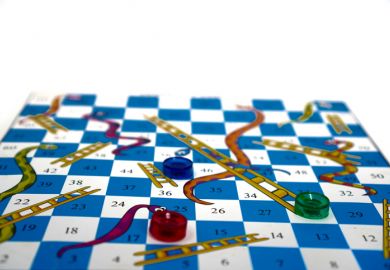Source: Nick Shepherd
I want to tell you about one of my most remarkable teaching failures.
For many years I have been on the trail of post-Socratic philosophy in the West. When Plato died, control of the academy was up for grabs. In the end, the “academics” - that is, those philosophers interested in theoria or abstract reasoning - won the day and the history of professional philosophy was under way. Post-Socratic philosophers such as the Cyrenaics, Stoics and Cynics (who concerned themselves with the more practical matters of living well) were left, as it were, outside the academy. This perhaps was ultimately agreeable to the likes of Diogenes and his more worldly cohort, because it placed their philosophical “work” in the streets with the common folk. In my attempt to follow this type of work through Western history, I began to teach a course titled the Philosophy of Self-Cultivation.
I first taught it with Rich Lally, a kinesiologist interested in the philosophy of sport with an interest in endurance sport. He was also a pretty hardcore triathlete who taught me how to run, cycle and swim for hours at a time. The induction was a painful one, but the bumps and bruises I suffered sometimes led to small but meaningful breakthroughs. Such lessons would not have been lost on the writers we wanted to include in the course reading list: Diogenes, Seneca, William James and Margaret Fuller among them.
While chatting on a long run, Rich and I agreed that the course should also have a practical dimension, since self-cultivation in life almost always involves the development of skills. The obvious answer for him was that we start the students on the road to some kind of endurance skill - so since we were to meet three days a week, we decided to make Friday a movement day. Each student was required to spend Friday’s class in one of three groups: the runners, the joggers or the walkers.
But here was the problem: the course was being offered as “academic” philosophy not physical education. If we did not include something “academic” in the Friday classes, we expected that our colleagues would make fun of, or even challenge, the scholarly value of the course. So we wrote into the syllabus the requirement that each group carry on a discussion about the week’s reading at the same time. That seemed scholarly enough.
The course got under way in good order, but the conversations on the texts that were supposed to happen on Fridays began in a halting sort of way. Soon the students were just getting to know each other - talking about home towns, music, majors and the future. They were “just talking”. At first we tried to bring the conversations back to the readings, but as the weeks went on we realised it was futile. So we gave up. Our great idea in radical pedagogy had been a radical failure.
Or so we thought.
I still teach the course and the students still “just talk”, because Rich and I learned something rather important in that first course. By the end of 15 weeks, the students knew each other very, very well - they were strongly bonded. In fact, it was the most tightly knit group that either of us had ever taught. They overlooked, or humorously worked through, each other’s weaknesses, failings and foibles. They began to work together and encourage each other. Some of the runners would take days to go with the walkers and encourage them in their walking habits. The walkers, in turn, helped the runners slow down long enough to actually talk things through. Simply put, the students cared about each other. But as most teachers know, there is nothing simple about it.
When we read the course evaluations, we received remarkably high scores. The students liked the way the course had used the history of ideas to address their lives. That sort of thing is to be expected: we are all deeply interested in ourselves. What caught Rich and I off guard was the response to the question: “What did you like most about this course?” Their answer, unanimously, was “walking” - not because it was easy and “non-academic”, but because it allowed them to share their lives and ideas, and to build a sense of community. This is what they had most clearly “cultivated”.
This surprised some colleagues, who were stuck in their narrow, arbitrary and (I now believe) misguided notion of the academy that began when the post-Socratics were turned out on to the streets. The point my students were making was clear (although not necessarily easy to accept for those in the academy): learning is not a function of classrooms, intellectual categories or encrusted cultural habits. It is rather about moving together through life in thoughtful, creative ways.
So 20 years later, I still include walking in my self-cultivation courses. It still fails miserably as an occasion for simply discussing texts, but it inevitably succeeds in creating a community of interested learners. I still have students tell me that they learn more on the walking days than when I lecture and address the particular readings. Maybe some would regard this as a sign of my inadequacy as a teacher and maybe they’d be right. But we should not forget that the dominance of theorising in the academy was the result of a political power struggle between different sorts of teachers - it is not a natural or instinctive truth about the best ways to learn and teach.
I don’t know if walking itself is the “key”, but I do think that wandering away from the habit of sitting in classrooms might be a good step towards learning how to negotiate our lives.
Register to continue
Why register?
- Registration is free and only takes a moment
- Once registered, you can read 3 articles a month
- Sign up for our newsletter
Subscribe
Or subscribe for unlimited access to:
- Unlimited access to news, views, insights & reviews
- Digital editions
- Digital access to THE’s university and college rankings analysis
Already registered or a current subscriber? Login




